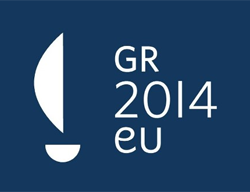Institutions of the European Union

History
It came into being in 1974 and was given formal status by the Single European Act. Its members are assisted by the Ministers for Foreign Affairs and by a Member of the Commission. The European Council meets at least once every six months under the chairmanship of the Head of State or Government of the Member State which holds the Presidency of the Council of the European Union, which rotates twice a year.
In practice, the European Council meets at least four times a year, and special European Councils are also organised. Since 2000, in accordance with the Lisbon strategy, the March Council addresses economic, social and environmental issues. Presidency conclusions are published after each meeting.
Structure
It comprises the heads of state or government of the Union's member states, along with its President and the President of the Commission. The High Representative takes part in its meetings, which are chaired by its President.
Functions
While the European Council has no formal legislative power, it is an institution that deals with major issues and any decisions made are "a major impetus in defining the general political guidelines of the European Union".
The Council meets at least twice every six months; usually in the Justus Lipsius building, the headquarters of the Council of the European Union of Brussels.
Changes under the Lisbon treaty
The European Council will officially gain the status of an EU institution, thus being separated from the Council of Ministers. It will continue to be composed of the heads of state or government of the Union's member states along with the (nonvoting) President of the European Commission.
A President of the European Council will be appointed for a two and a half year term in a qualified majority vote of the European Council. A President could be reappointed once, and besides be removed by the same voting procedure. Unlike the post of President of the European Commission, the appointment of the President of the European Council does not have to reflect the composition of the European Parliament.
The President's work will largely be administrative, as he or she will be responsible for coordinating the work of the European Council, hosting its meetings and reporting its activities to the European Parliament after each meeting and at the beginning and end of his or her term. Additionally, the President will provide external representation to the Union.
Under the Treaty of Lisbon, the European Council will have a greater say over police and justice planning, foreign policy and constitutional matters, including: the composition of the Parliament and Commission; matters relating to the rotating presidency; the suspension of membership rights; changing the voting systems in the treaties bridging clauses; and nominating the President of the European Commission and the High Representative of the Union for Foreign Affairs and Security Policy.
The High Representative, along with the new post of President, are the only formal changes in composition. Further more, under the emergency break procedure, a state may refer contentious legislation from the Council of Ministers to the European Council if it is outvoted in the Council of Ministers, notwithstanding that it may still be outvoted in the European Council.







 Svejo
Svejo Twitter
Twitter Link4e
Link4e Pipe
Pipe Web-bg
Web-bg Bghot
Bghot Lubimi
Lubimi Novinitednes
Novinitednes Ping
Ping Facebook
Facebook Myspace
Myspace Mix
Mix Del.ico.us
Del.ico.us Reddit
Reddit Digg
Digg Stumbleupon
Stumbleupon Myweb Yahoo
Myweb Yahoo Google Bookmarks
Google Bookmarks Google Buzz
Google Buzz

